Table of Contents
Harappan Civilization
The Harappan civilization, also known as the Indus Valley Civilization, is one of the earliest and most impressive civilizations of the ancient world. It emerged in the Indus River valley in present-day Pakistan and northwest India around 2600 BCE and lasted until around 1900 BCE. The civilization was named after the city of Harappa, which was one of the major centers of the civilization.
The Harappan civilization was one of the most technologically advanced and sophisticated civilizations of its time. It had a well-planned urban system with well-laid out streets and drainage systems. The cities of the Harappan civilization were also characterized by large, impressive buildings made of baked bricks, and a sophisticated water management system.
Harappan Civilization: Script
One of the most impressive features of the Harappan civilization was its writing system. The Harappans had a script that is yet to be fully deciphered, but it is believed to be one of the earliest writing systems in the world. The Harappans also developed a system of weights and measures that was remarkably accurate.
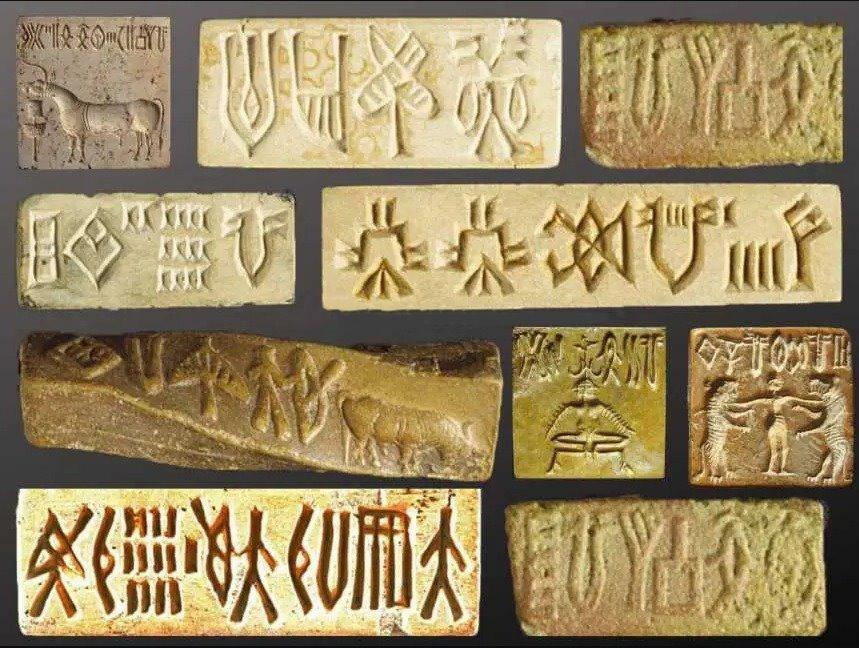
Harappan Civilization: Trade and Organization
The Harappans were a people who were engaged in trade and commerce. They traded with other civilizations of the ancient world, including Mesopotamia and Egypt. They were also skilled craftsmen and artisans, producing a wide range of goods, including pottery, jewelry, and textiles.
The Harappan civilization was also characterized by a remarkable level of social organization. The society was divided into different classes, with the rulers and priests at the top, followed by the merchants and traders, and the farmers and laborers at the bottom. The Harappans also had a sophisticated legal system, with courts and judges who adjudicated disputes.
Harappan Civilization: Harappa and Mohenjodaro
Harappa and Mohenjodaro are two of the most important archaeological sites of the Indus Valley Civilization, which was one of the world’s earliest urban civilizations that existed between 2600 BCE and 1900 BCE. These ancient cities are located in present-day Pakistan and provide valuable insights into the culture, society, and technology of the Indus Valley people.
Harappa and Mohenjodaro: Discovery
Harappa and Mohenjodaro were both discovered in the early 20th century by archaeologists who were intrigued by the stories of ancient civilizations in the Indian subcontinent. Mohenjodaro was discovered in 1922 by R.D. Banerji, while Harappa was discovered in 1921 by D.R. Sahni. Both cities were excavated in the decades that followed, and numerous artifacts and structures were unearthed that gave us a glimpse of the lives of the people who lived in these cities.
Harappa and Mohenjodaro: Striking Features
The most striking feature of these cities was their impressive urban planning and sophisticated infrastructure. The streets were laid out in a grid pattern, and the houses were built using standard-sized bricks. The cities had a sophisticated drainage system, which included underground sewers and public baths. The houses had private bathrooms and were equipped with wells that provided water for daily use.
Harappa and Mohenjodaro: Profession
The people of Harappa and Mohenjodaro were skilled artisans and craftsmen. They produced a wide variety of goods, including pottery, jewelry, and textiles. They also engaged in trade with other regions, which is evident from the artifacts found in these cities that were not indigenous to the region.
Harappa and Mohenjodaro: Scripts and Mystery of Decline
The writing system of the Indus Valley Civilization remains a mystery, as the script has not been deciphered yet. However, many seals and inscriptions have been found in Harappa and Mohenjodaro, indicating that the people had a written language.
The decline of the Indus Valley Civilization remains a subject of debate among scholars. Some theories suggest that a natural disaster such as a flood or earthquake may have contributed to the decline. Others suggest that it was due to environmental degradation, invasion by external forces, or a combination of various factors.
Despite the mystery surrounding the decline of the Indus Valley Civilization, the discovery of Harappa and Mohenjodaro has provided us with valuable insights into the culture and society of one of the earliest urban civilizations in the world. These ancient cities continue to fascinate archaeologists and historians and provide a fascinating glimpse into the past.
Harappan Civilization Art
The Indus Valley Civilization, also known as the Harappan civilization, flourished in the northwestern region of the Indian subcontinent from around 2600 BC to 1900 BC. This civilization is famous for its advanced urban planning, sophisticated drainage systems, and a unique script that has yet to be deciphered. But another significant aspect of Harappan culture is its art.
The art of the Harappan civilization is primarily found in the form of sculptures, seals, pottery, and jewelry. The motifs used in Harappan art are predominantly inspired by nature, animals, and human figures. These motifs are often stylized and geometric, reflecting the precision and craftsmanship of the Harappan people.
Harappan Civilization Art: Dancing Girl
One of the most notable examples of Harappan art is the figurine of the Dancing Girl. This bronze sculpture, dating back to 2500 BC, depicts a young girl in a graceful pose, with her arms raised above her head and her left foot slightly forward. The sculpture is only 10.5 cm tall, but it is incredibly detailed and beautifully crafted, with intricate braids, bangles, and a necklace.
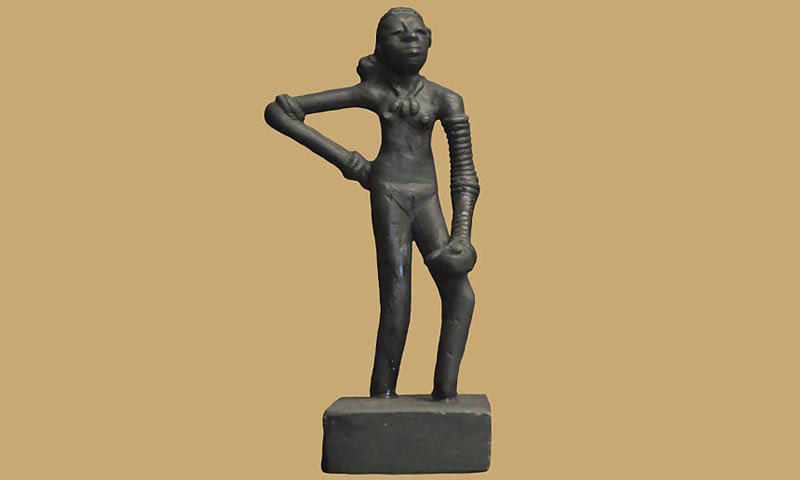
Harappan Civilization Art: Priest King
One of the most iconic and enigmatic artifacts of the Harappa civilization is the so-called “Priest King” statue. The statue is made of steatite, a soft stone that is easy to carve, and stands about 17.5 centimeters tall.
The statue depicts a male figure wearing a headdress that resembles a horned helmet. His eyes are wide open and staring, and his mouth is slightly open as well. He wears a long, flowing robe that covers his entire body and is decorated with intricate patterns.
The identity of the “Priest King” is not known for certain, but some scholars have speculated that he may have been a high-ranking religious or political figure in the Harappa civilization. The horned headdress has been interpreted as a symbol of divinity or power, and the intricate patterns on the robe may represent a particular religious or cultural tradition.
Harappan Civilization Art: Seals
Another important aspect of Harappan art is the seals. These small, square pieces of stone are engraved with intricate designs and motifs, including animals like bulls, elephants, and tigers. The seals also feature inscriptions in a script that has yet to be deciphered, which has led to much speculation about the language and writing system used by the Harappan people.
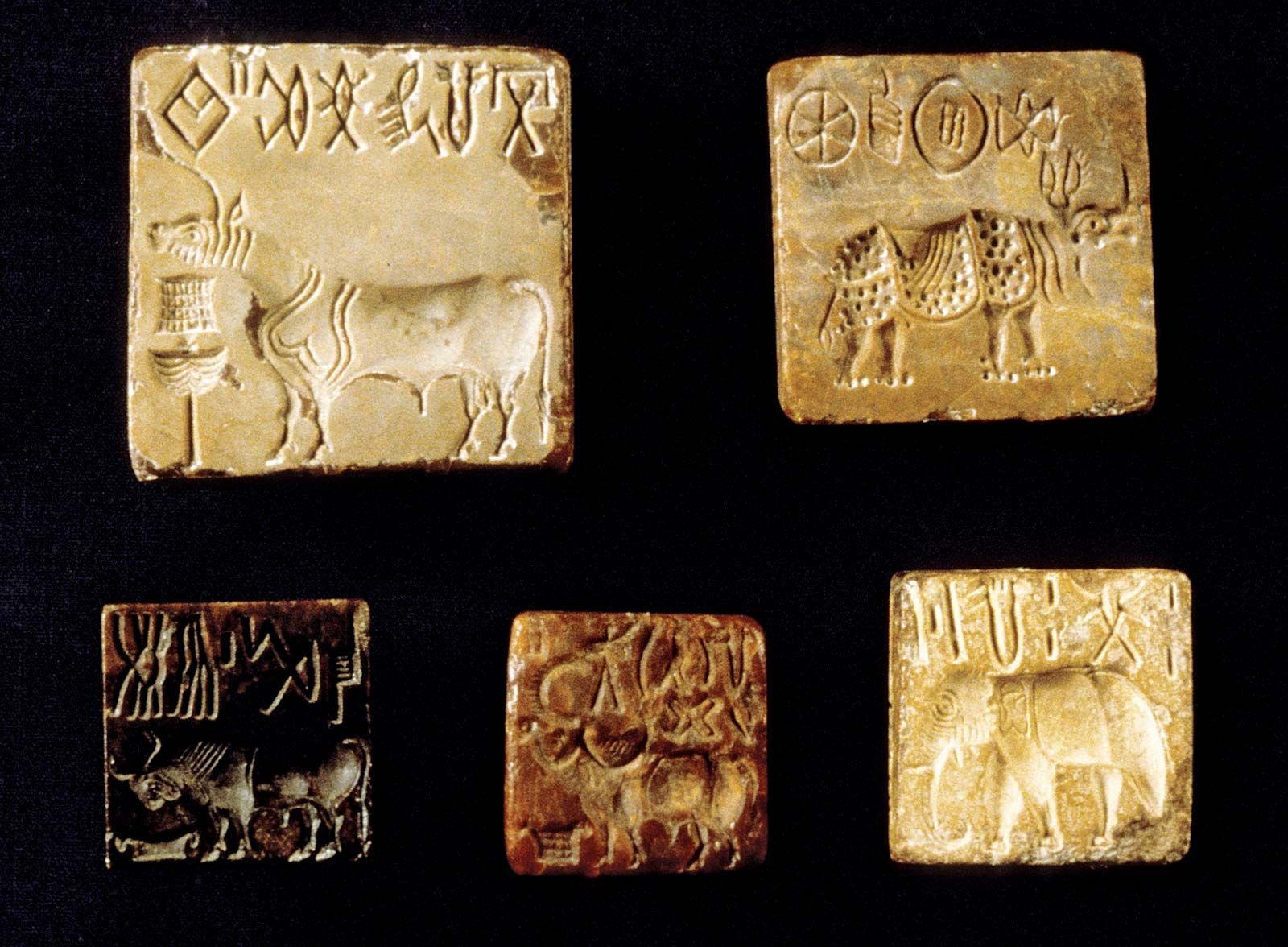
Harappan Civilization Art: Pottery
Pottery is another significant form of Harappan art, with many different types of vessels found throughout the Indus Valley. The pottery is often decorated with geometric patterns and animal motifs, such as bulls or fish. Some of the pottery found at Harappan sites has also been glazed, a technique that was not widely used in other parts of the ancient world at the time.
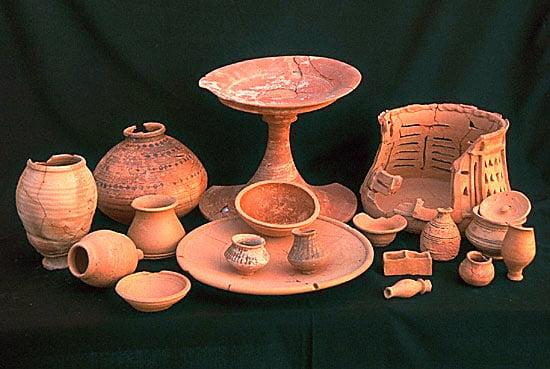
Harappan Civilization Art: Jewelry
Finally, Harappan jewelry is notable for its use of materials like gold, silver, and precious stones. The jewelry is often intricately crafted, with elaborate necklaces, earrings, and bracelets. The jewelry designs are typically inspired by nature, with motifs like leaves, flowers, and animals.
Overall, the art of the Harappan civilization is a testament to the skill and creativity of the ancient people who lived in the Indus Valley. Their art reflects a deep reverence for nature and a keen attention to detail and craftsmanship. While much of the civilization’s writing system and language remains a mystery, their art provides us with a glimpse into their culture and way of life.
Harappan Civilization: Architecture
The Harappan civilization, also known as the Indus Valley civilization, was one of the earliest and most advanced civilizations of the ancient world. It flourished in the Indus Valley from around 2600 BCE to 1900 BCE, covering present-day Pakistan and parts of India. The architecture of the Harappan civilization is a testimony to the advanced engineering and town planning skills of the people who lived in this civilization.
The Harappan civilization had two major urban centers: Harappa and Mohenjo-Daro. Both cities were laid out in a grid-like pattern with the streets running north-south and east-west, forming rectangular blocks. The streets were wide and straight, and the houses were well-organized, indicating a well-planned urban layout.
Harappan Civilization: Baked Bricks
One of the most striking features of Harappan architecture was the use of baked bricks. The bricks were uniform in size and shape, indicating a sophisticated level of technology in brick-making. The baked bricks were used to construct walls, floors, and even drainage systems. The walls were thick, providing stability and protection from the elements.
Harappan Civilization: Houses
The houses in Harappa and Mohenjo-Daro were multi-storied, with each floor serving a different purpose. The ground floor was used for storage, while the upper floors were used for living quarters. The houses had a central courtyard that provided natural light and ventilation. The roofs were flat and made of baked bricks, which were used to collect rainwater.

Harappan Civilization: Public Buildings
The public buildings in Harappan civilization were equally impressive. The Great Bath in Mohenjo-Daro was a massive public structure with steps leading down to a large pool. The pool was lined with baked bricks and had a sophisticated drainage system that allowed for the water to be constantly replenished. The Great Bath is believed to have been used for ritual purification.
Harappan Civilization: Granary
Another impressive public structure was the granary. The granary was a massive building with thick walls, indicating that it was used to store grain. The granary had a complex system of channels and vents that allowed for proper ventilation and prevented moisture from entering the storage areas.
Harappan Civilization: Water Management and Drainage System
The Harappan civilization also had an advanced system of water management. The cities had a complex network of channels and drains that allowed for the efficient distribution and disposal of water. The drainage system was so sophisticated that it is still used in parts of the Indian subcontinent today.
The architecture of the Harappan civilization was a testament to the advanced engineering and town planning skills of the people who lived in this civilization. The use of baked bricks, multi-storied houses, and complex public structures like the Great Bath and granary, as well as the sophisticated water management system, all indicate a high level of technological sophistication. The Harappan civilization was truly an advanced civilization that made significant contributions to the development of architecture and engineering.
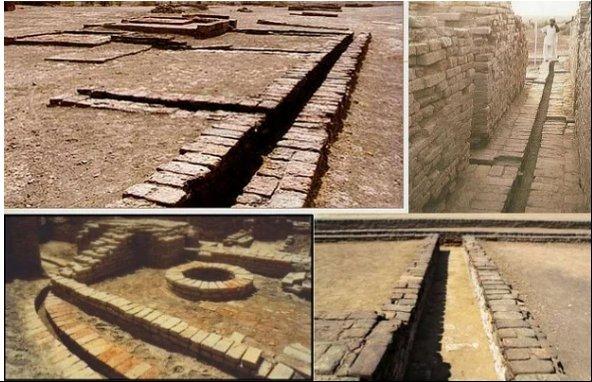
Decline of Harappan Civilization
- One of the mysteries of the Harappan civilization is its sudden decline and disappearance around 1900 BCE.
- There are several theories about what might have caused the decline, including environmental changes, invasions by outside forces, and internal conflicts.
- Whatever the reason for its decline, the Harappan civilization left a lasting legacy in the Indian subcontinent and beyond.
- The legacy of the Harappan civilization can be seen in the continued use of some of its technologies and techniques, such as the use of baked bricks in construction and the use of the plow in agriculture.
- The Harappan civilization also influenced the development of later civilizations in the region, including the Mauryan and Gupta empires.
The Harappan civilization was one of the most impressive and advanced civilizations of the ancient world. Its achievements in urban planning, technology, writing, trade, and social organization continue to inspire and fascinate scholars and laypeople alike. The legacy of the Harappan civilization is a testament to the ingenuity and creativity of the human spirit.

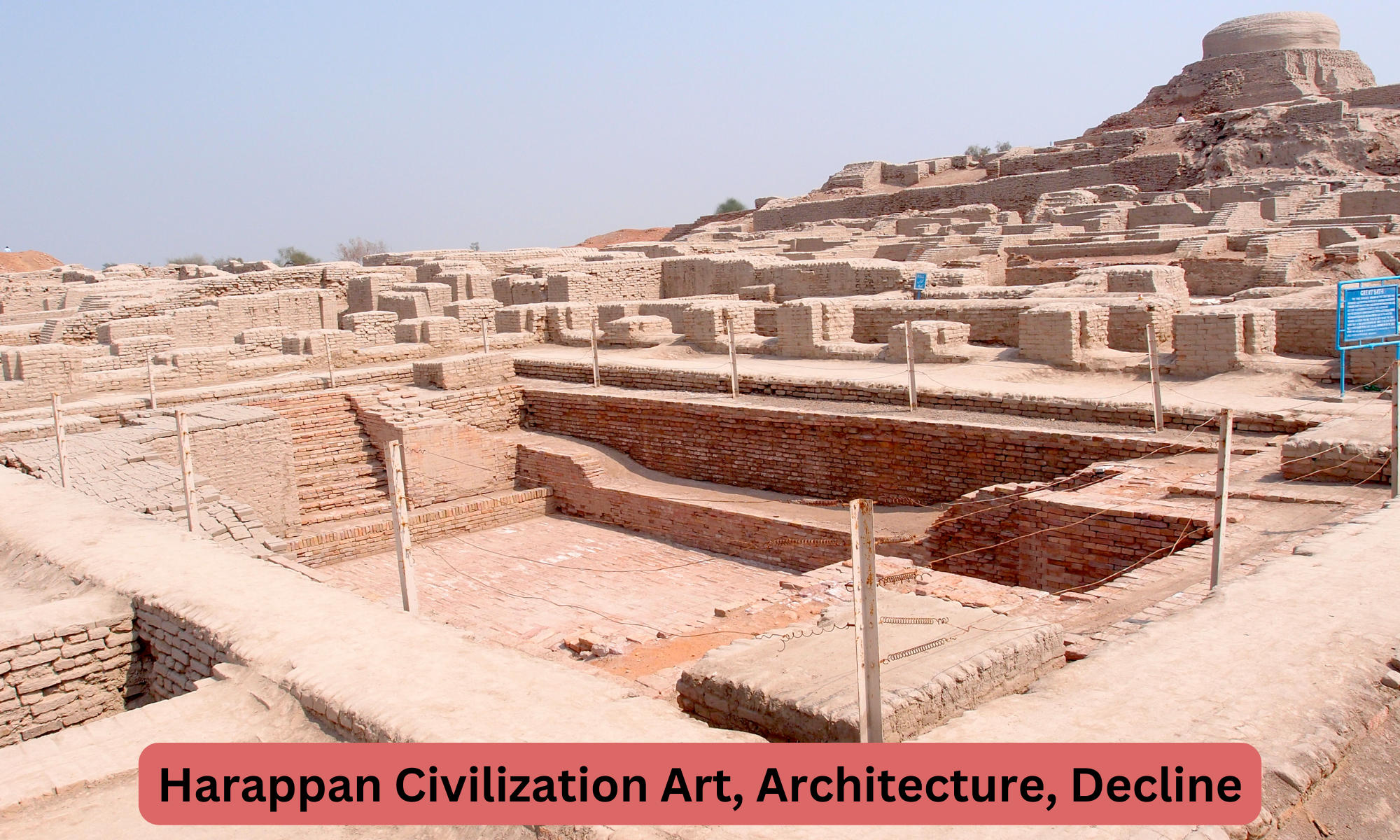

 TSPSC Group 1 Question Paper 2024, Downl...
TSPSC Group 1 Question Paper 2024, Downl...
 TSPSC Group 1 Answer key 2024 Out, Downl...
TSPSC Group 1 Answer key 2024 Out, Downl...
 UPSC Prelims 2024 Question Paper, Downlo...
UPSC Prelims 2024 Question Paper, Downlo...
